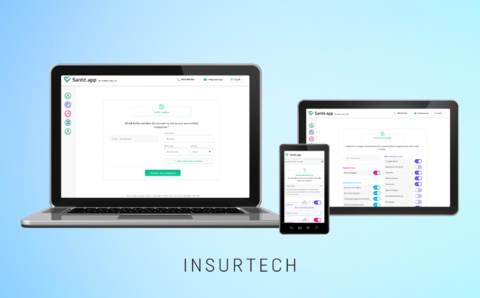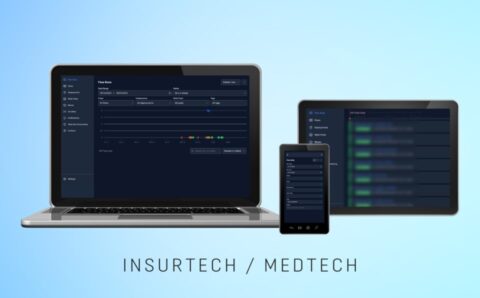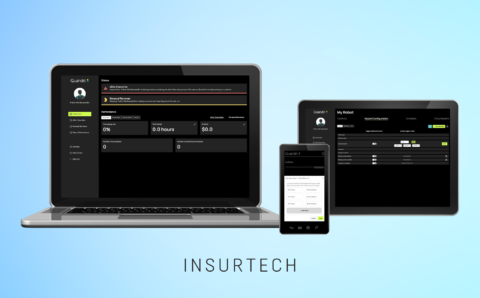
Change is a constant, and most things change every day. Some things disappear, like the dial up modem. But software development isn’t going anywhere, it’s only going to become more necessary tomorrow, next year and the decade after that. Lightning-speed changes in technology can make your head spin, but that’s what startups need to face. What they develop now can be obsolete in a short time. That reality is also what drives startups. If you stay ahead of everyone else, you’ll have quite the advantage.
One of the ways to be ahead of the curve is to master the Software Development Life Cycle (SDLC). This methodology allows startups to evaluate their clients’ concerns, lead with communication-centric processes and create custom-tailored solutions. This programming framework can be administered to clients with the most basic or even the most complicated conditions, which is why it’s necessary for startups to hone this skill. Not only will they end up with satisfied customers but will also be able to adjust their products with ease.
The success of the project will depend on the right balance of your teams. Startups usually spend 80% of their activity on software development with the remaining 20% on marketing but this ratio will definitely change over time. Creating a flexible and adaptable combination of members for your Software Development Team will help your company out-compete, out-innovate, and out-income all of your competitors.
Table of Contents:
From Idea to Unicorn: Successful Software Development
A great start up begins with a great idea. That great idea, in turn, becomes a great product. But you’ve hit a snag. You have no tech staff with the knowledge you need, and you don’t know who to turn to for web development.
All you know is that a website can cost a lot of time and money. You don’t know where to start.
That’s when you will need a great Software Development team. They can lead you through the process and guide you towards the most successful strategies.
The Software Development Life Cycle
The most important part of the Software Development Cycle starts with a conversation. This conversation has to go smoothly, without much confusion. You’ll want everybody to be on the same page and to have concrete goals written down. To say it bluntly, communication is key.
You will have to talk out disagreements, confusion and learn from each other. Without that project management cornerstone, you are likely to miss your goals and spend far too much resources, like time, budget, effort, and energy
After you nail that conversation down, your Unicorn becomes possible.
But before you hire the team or even start beginning to put pen to paper, you will have to know what the Software development life cycle looks like.
SDLC 1: Planning
Just like everything else, planning is the cornerstone of the Software Development Life Cycle. In the planning phase, be aware that Python, one of the most flexible programming languages out there, will enable you to solve many problems. We’ve created all sorts of data-driven dashboards and management systems, handled Amazon and other marketplace automation, created modern stand-alone web stores with thousands of inventory items, and consulted start-ups, SMBs, and enterprises of different levels. We know that Python is the programming language that will support you in releasing your Unicorn.
Some of the most successful companies that have followed this model are Foursquare, Squarespace, and Enthusiast Gaming, represented by their CEO, Adrian Montgomery. As a result, decent planning led Enthusiast Gaming to become one of the largest online gaming communities in North America.
Another good example is Whatsapp, who also had a focused purpose – to provide a friction-free user experience without advertising. With that focused plan, they have become very successful.
Common Planning Questions:
-
- What killer features do you need?
- What problem will the software solve?
- What features does the audience want?
With our experience and knowledge of Python development, we can bring your Unicorn to life.
SDLC 2: Prototyping
After you’ve defined what you need, confirmed that the whole team clearly understands the goals, you’ve got to start making a software product. The best way we have found to do that is through iterating the software. This does require time and money, but there are many productivity tools that can help reduce costs and eliminate confusion.
Iterating the project means flexibility. Even though you have done the hard work of defining the project scope, you must be ready for unforeseen circumstances to occur. Here are some typical issues that may arise: The source info is unavailable. There was a change in documentation or pricing from a third-party provider. New industry regulations and policies suddenly necessitated a change in plans. The network environment upgraded to a new version. The company started using a new inventory management system.
But, while iterating the software, new opportunities may arise that become more important than your initial goals. If that is true, take advantage of the opportunity. If a system can be improved by widening the scope, take advantage.
In our experience, the Python programming platform Django is perfect for this stage. It is easy to use, safe, and very flexible allowing any start up to be fast and scalable. It even drives down the cost of start ups, through the ready-to-use nature of the language.
Prototyping Tips:
-
- Remember that the goal is to prove the idea works
- Plan for a Minimum Viable Product
- Aim to reach the user testing phase.
SDLC 3: Testing
After you’ve iterated it what seems like a hundred times, it has to go out for testing. The point of beta testing is to figure out the bugs and errors in the system and fix them before the product launches in the market.
It’s easy enough to identify how a couple of systems interact on a large scale and fix those exceptions. Your development team should be able to set the objects, clear up the arguments, and identify the resource warnings that occur.
After it is running smoothly on the system, it is good to bring staff and customers into the development cycle to see how they are going to react. If they touch two buttons at the same time, can they crash the system? It’s important to get feedback from the people who are most likely to use the program.
Extensive testing of modules with users is a great way to discover errors and fix them. Do any of your modules throw an exception? What impossible inputs are going to crash which module? You’ll never find out without users.
Testing Tips:
-
- Test with users as soon as viable.
- Record user feedback
- Put effort into designing user feedback surveys
SDLC 4: Deployment
Finally, you deploy the product. But before you deploy the product, make sure to set up regular backups. We want the system easily recoverable, just in case. Once that’s taken care of, you can go live with your software.
Before you install your software, test one last time. The testing environment should mimic a live environment as well as possible. We’ve done this hundreds of times, so you do not have to worry about any issues not being prepared for.
Communication is a key element of this phase also. Communicating with and responding to users is necessary, because they help in validation of the project. To that end we clearly communicate what expectations are, and ensure technical support is easily available.
All that feedback can be entered into a task management system, allowing you to quickly and easily respond to issues.
The SDLC is a complex, ever-evolving process that doesn’t stop when you roll out the software. To do it well, a lot of education and more experience are needed. What you bring to the table is communication and a clear vision, you can bring the Unicorn to life.
Getting what you want out of the SDLC may mean you have to boost your capacity by hiring experts. That is PLANEKS. We are happy to consult with you on your digital startup.
Deployment Tips:
-
- Specify the early adopters who will test the software
- Test your application
- Don’t forget to train your staff.
We will take care of your idea and make your digital product come alive.
Bring Your Product to Life
Let our experts guide you through the entire product development process, from concept to launch.
Conclusion
PLANEKS has developed hundreds of web applications. We’ve worked on apps, websites, and backend applications. We’ve seen all the issues you might care to think up. And we’ve solved them all, leaving happy clients behind.
Contact us for a free consultation today. Ask us if we can solve your issue.

Santé.app
We built Santé.app to optimize health insurance selection, using automated surveys to provide customized insurance offers and comparisons.

AI Platform
Our platform integrates machine learning to optimize healthcare admin tasks, improving productivity and service quality in medical facilities.

Robot Factory
Robot Factory software empowers insurance brokers with automation, offering efficient document management & time savings.

